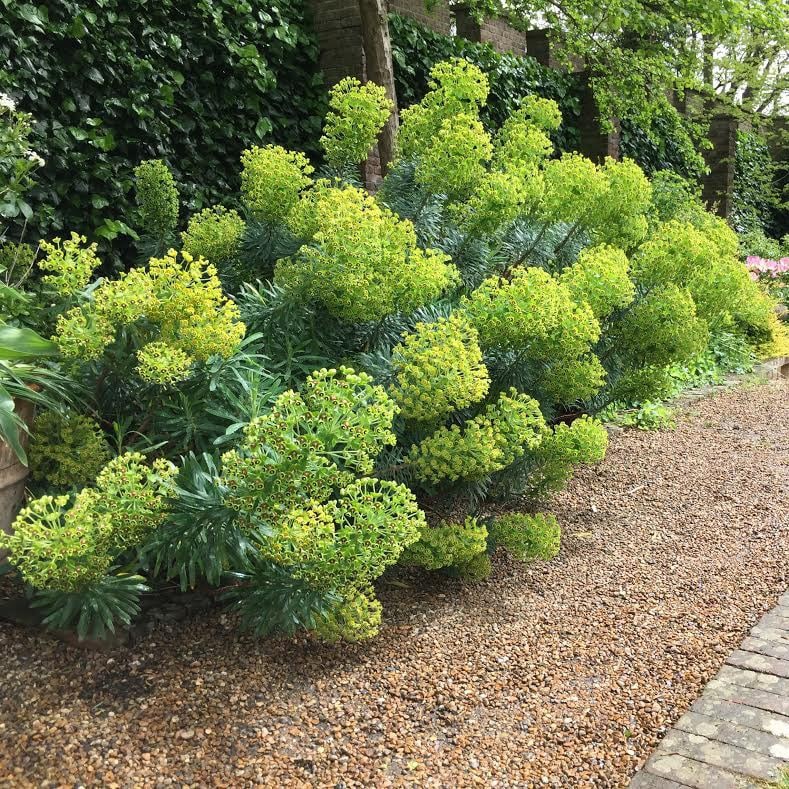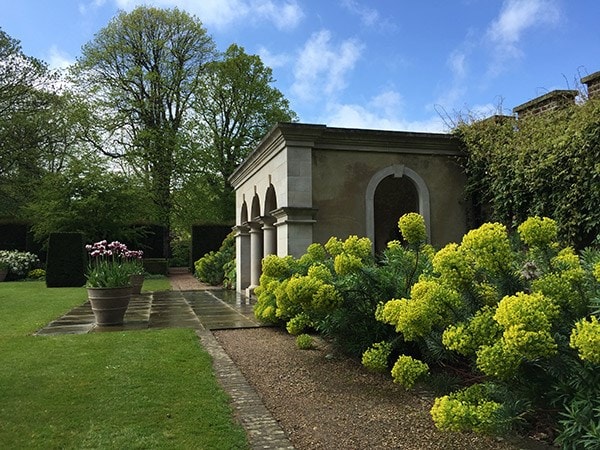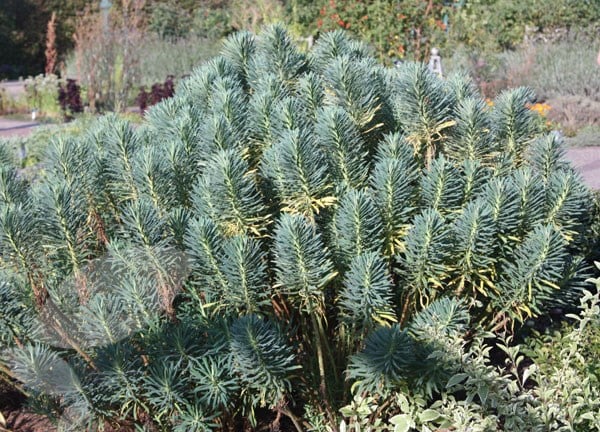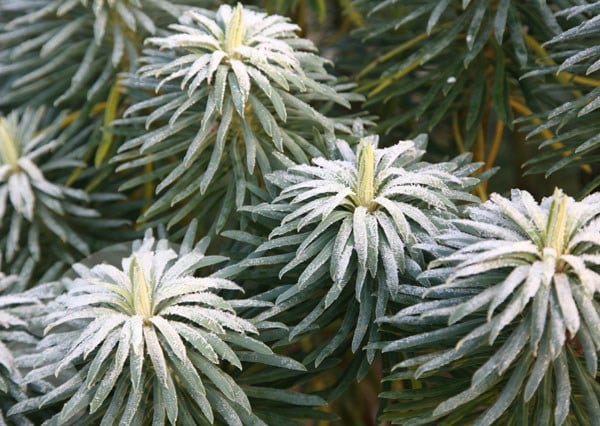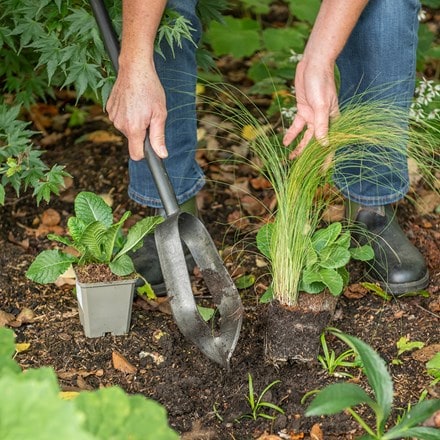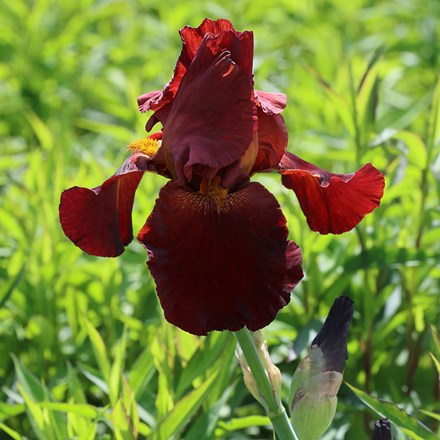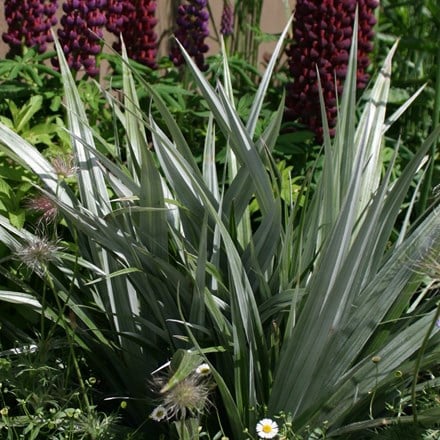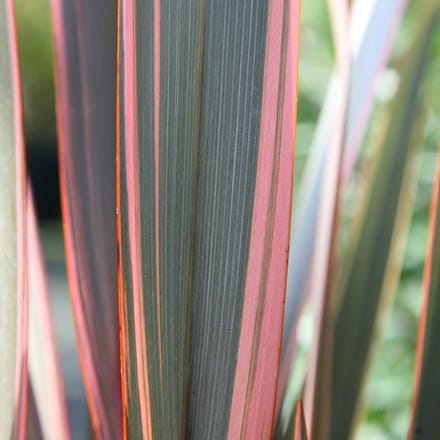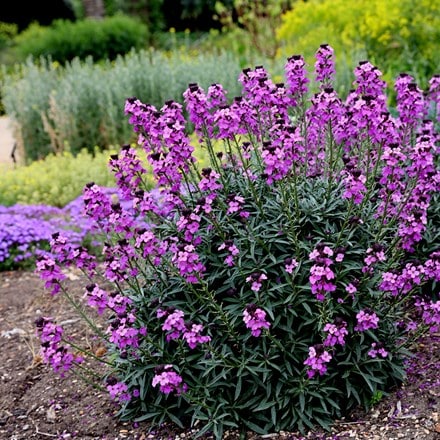Euphorbia characias subsp. wulfenii
spurge
- 9cm pot
- £9.99
- In stock (shipped within 2-3 working days)
- 3 × 9cm pots
- £22.99 £7.66 each
- In stock (shipped within 2-3 working days)
- 6 × 9cm pots
- £39.99 £6.67 each
- In stock (shipped within 2-3 working days)
- 2 litre pot
- £19.99
- available to order from summer
- 3 × 2 litre pots
- £49.99 £16.66 each
- available to order from summer
Delivery options
- Standard £5.99
- Position: full sun
- Soil: moderately fertile, moist but well-drained soil
- Rate of growth: fast
- Flowering period: March to May
- Hardiness: fully hardy
This handsome euphorbia has upright stems clothed with whorls of fleshy, glaucous leaves and topped with huge heads of chartreuse-green flowers with bronze 'eyes' from March to May.
The Edwardian garden designer Gertrude Jekyll described this sun-loving, evergreen shrub as 'one of the grandest of plants'.
Euphorbia characias originates from the Mediterranean, where it is found on dry rocky slopes and scrubland, so it is very tolerant of drought once it becomes established. It forms a natural rounded shape, and brings structure and an architectural quality to the garden.
A tall mainstay of the traditional herbaceous border, it's equally at home in a contemporary minimalist or gravel garden. It may self-seed, but plants rarely come true from seed.
The Edwardian garden designer Gertrude Jekyll described this sun-loving, evergreen shrub as 'one of the grandest of plants'.
Euphorbia characias originates from the Mediterranean, where it is found on dry rocky slopes and scrubland, so it is very tolerant of drought once it becomes established. It forms a natural rounded shape, and brings structure and an architectural quality to the garden.
A tall mainstay of the traditional herbaceous border, it's equally at home in a contemporary minimalist or gravel garden. It may self-seed, but plants rarely come true from seed.
When planting Euphorbia characias subsp. wulfenii, it's generally not necessary to add compost or enrich the soil unless the soil is very poor, as this plant thrives in well-drained, moderately fertile soil. However, if the soil is particularly sandy or heavy, you can work in some well-rotted compost to improve structure and drainage.
Water thoroughly during the initial establishment period, but once settled in, it prefers drier conditions and should only be watered sparingly. Avoid waterlogged soils, as they can lead to root rot.
Each stem is biennial, so will produce leaves in its first year and flower in its second. Once the stem has produced a flower it should be cut right back to its base, or to a point where there is new growth emerging, in midsummer. This will make way for lots of new, fresh shoots.
When working with spurges always wear gloves since the milky sap is poisonous and a potential skin irritant. Remove seedlings as they appear.
Water thoroughly during the initial establishment period, but once settled in, it prefers drier conditions and should only be watered sparingly. Avoid waterlogged soils, as they can lead to root rot.
Each stem is biennial, so will produce leaves in its first year and flower in its second. Once the stem has produced a flower it should be cut right back to its base, or to a point where there is new growth emerging, in midsummer. This will make way for lots of new, fresh shoots.
When working with spurges always wear gloves since the milky sap is poisonous and a potential skin irritant. Remove seedlings as they appear.
- Humans/Pets: IRRITANT to skin/eye; harmful if eaten
Goes well with
Pinpoint hole maker for young plants/bulbs - Crocus by DeWit
small
£49.99
In stock (shipped within 2-3 working days)
